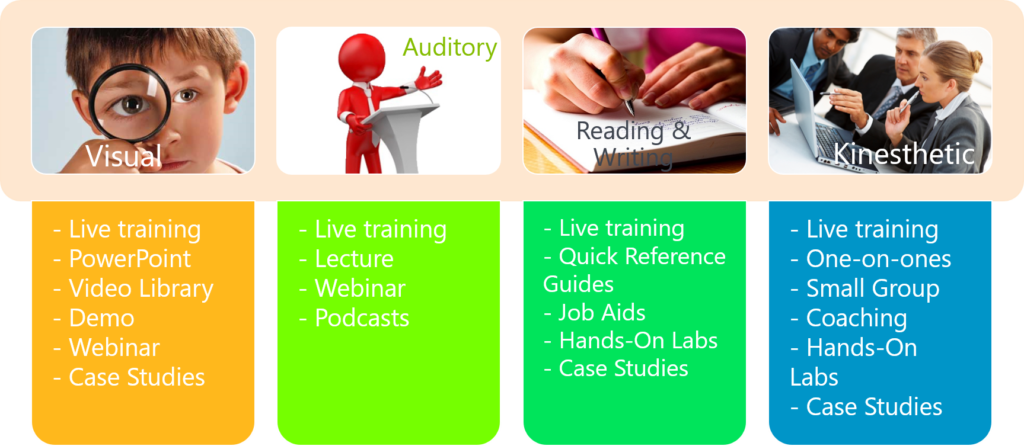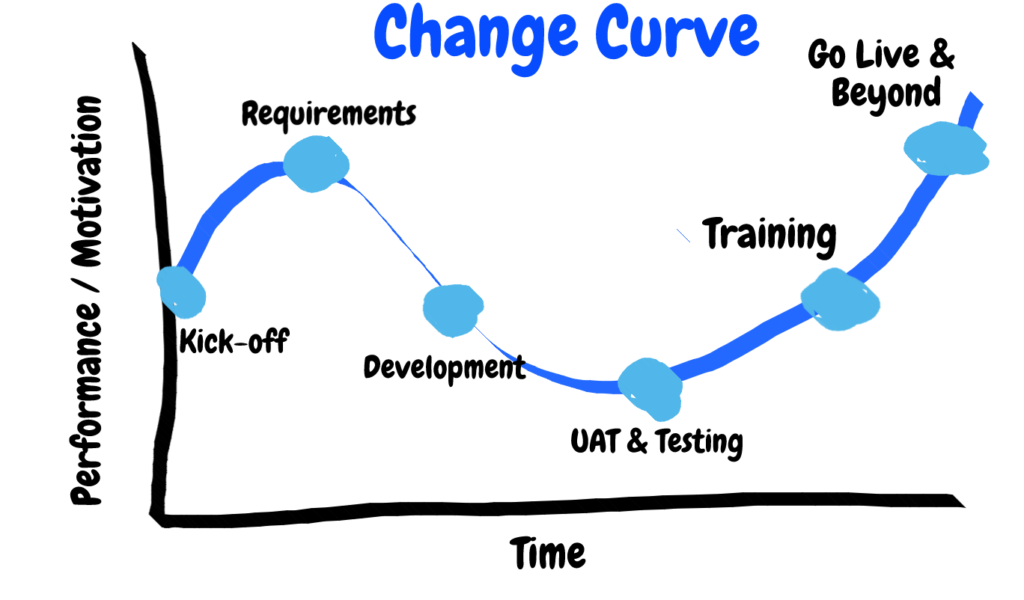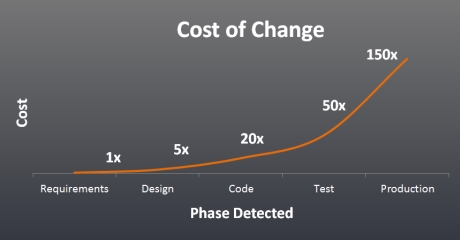Your cart is currently empty!
Category: User Adoption
-

Business Rules in Dynamics 365
Business rules provide a simple drag-and-drop interface to implement commonly used business scenarios that used to require custom code. A business rule will run in real-time, so you will see the action as soon as a condition has been met (unlike a workflow that will run on form save). You can apply a business rule on a Main Form or Quick Create Form. A business rule will work online, on premise (versions 2013, 2015, 2016 or Dynamics 365), on Microsoft Dynamics 365 for Tablets and in Dynamics 365 for Outlook (supported in both online and offline modes).
Business Rule ActionsThere are seven actions you can take by configuring a simple drag-and-drop Business Rule on a form:
Recommendation: Add a recommendation to a fieldShow Error Message: Display a custom error messageSet Field Value: Set a field value based on a conditionalSet Default Value: Set a default value based on conditions metSet Visibility: Make a field visible or not visible based on conditions metSet Business Required: Set a field required only if it meets defined conditionsLock/Unlock: Lock or unlock a field only if it meets defined conditions
A Business Rule that uses the Set Business Required action. The RulesScope is important! When you configure a Business Rule, you have several options for setting scope:
- Entity: The Business Rule runs on the server side (meaning it gets queued up with workflows, plug-ins, etc). It runs on all forms.
- Specific Form: The Business Rule runs client side (meaning it runs when the user opens the form) only on the one identified entity form.
- All Forms: The Business Rule runs client side (meaning it runs when the user opens the form) on all forms for the entity.
Also, there are a few exceptions:
- Business Rules will not work on composite fields (like Full Name or the Address composite block).
- Business Rules will not work on multi-select option sets.
More Configuration ToolsBusiness Rules are a very simple way to increase user adoption by automating manual processes. Check out some of these other great resources to help encourage user adoption using configuration tools:
Need Help?If you need help implementing Business Rules in your organization, feel free to reach out to reenhanced. Fill out our Contact Form with details about what you’re working on, or email me directly at heidi@reenhanced.com.
-

Tooltips in Dynamics 365: A Quick User Adoption Win
When creating new fields for your users in Dynamics 365, add tooltips to help with user adoption. What is a tool tip? Simple! When your user hovers over a field, it will define or describe this field for them.
Let’s illustrate this from both the front ends of CRM and the back end. First, let’s see what a tooltips looks like to your users.

A Contact in CRM – the tooltip is highlighted. Your user can simply hover over a field, like Job Title in the above screen shot, to get a definition or description of what this field means. This is useful for company or industry specific fields.
Here’s how to set up a tooltip on the back end:
- Go to make.powerapps.com.
- Within the desired solution file, open the field where you need to add or edit a tooltip.
- Expand the Advanced options section.

Expand Advanced options - In the Description field, enter the text that should appear when a user hovers over a field in Dynamics 365.

Add your tooltip in the Description box There you have it! Super simple, yet very powerful for your users. We all want to encourage user adoption of our Dynamics 365 system. Tooltips are a very simple way to help a little bit. Check out some of these other great resources to help encourage user adoption using configuration tools:
-

VARK Learning Styles Applied to Dynamics 365 Training
There are many schools of thought when it comes to learning styles. One I have found to resonate well with adult learners and the Microsoft Dynamics 365 platform are the VARK learning styles when planning your CRM training. VARK stands for the four main learning styles: Visual, Auditory, Reading & Writing and Kinesthetic.
What is VARK and how can it apply to CRM training?The VARK theory says that you have a primary learning style. While you may be influenced by other learning styles, there is one primary area where learning comes easier.
Understanding these four key ways adults learn can help us to plan and deliver useful, lasting CRM training to our end users.
Visual learners learn best by observing, seeing and watching. They will give you undivided attention when you’re presenting PowerPoints and live demos.Auditory learners get a lot out of lectures, webinars and hearing.Reading and writing learners are likely taking notes as they read this.Kinesthetic learners (like me!) are hands-on. They’re the people who tell you that this CRM thing sounds great, but they need to get their hands on it to play around.As a Dynamics 365 trainer, or as someone tasked with training your end users, your challenge is to balance the training to apply all learning styles. You will likely default to training in your most primary (and also most comfortable) learning style. Make sure to offer training across all learning styles!
Applying learning styles to CRM trainingHow can you use your understanding of the VARK learning styles to CRM training? Easy! Understand what sort of training approach reaches each style and pick and choose to combine into a beautiful training experience for your end users! We will look at each learning style and point out some training techniques and methods that work well for each.
First of all, let’s discuss live training. As you will notice in the chart below, live training can reach all learning styles. This is by far the most effective method of training your end users. If at all possible, provide your end users with some sort of live, in-person training. In a perfect world, everyone will receive live training, supplemented with many of the materials listed below. For some organizations, especially those with an employee base that covers a large geographic area and multiple time zones, this can be difficult. But if should be the first option if possible!
Check out the below graphic for many training tools and techniques. They are split into the VARK columns to make it simple to pick and choose those that will work best for your user base.

How to Train Your Users with VARK in Mind, by Heidi Neuhauser. Need help?Have questions about training? Need our help deciding what’s best for your user group? Feel free to reach out to reenhanced! Fill out our Contact Form with details about what you’re working on, or email me directly at heidi@reenhanced.com. Happy training!
-

Model-driven Apps: Benefits to Your Users
Welcome to the exciting conclusion of the model-driven app series! Today we will look at managing properties in a model-driven app. This series includes six articles that will help you to get to know and use model-driven apps and PowerApps:
Managing PropertiesBenefits to Your UsersBenefits to Your UsersA paramount part of designing your app is ensuring that your end users are part of the entire process. Follow user adoption best practices and involve your end user group in every aspect of the planning and design process. Have a few key members try out the app and record their feedback.
Beyond simply involving your end users, how does a model-driven app help them? Here are a few ways model-driven apps are tied to an increase in user adoption:
- Providing a customized model-driven app to experience CRM gives your end users with a streamlined way to access their data.
- Only show users the information they need to see. Understand your user group and update your Site Map accordingly. Display areas that they use, in groupings that make sense to them and how they do their job.
- Hide the noise they don’t need to see in order for them to complete their job successfully. Simplify the user experience.
Following the steps within the blog series and engaging your user group will lead to a nice, streamlined way to access data, with the ultimate goal of increasing user adoption.
-

What is a Dynamics 365 Rescue project?

Source: Medical vector created by freepik – www.freepik.com Have you ever had thoughts like:Is my Dynamics 365 implementation built correctly?
Is it really supposed to work like this?
Does everyone else who uses Dynamics have the same pain points?
If so, you might be a good fit for a Dynamics 365 Rescue.
Dynamics 365 is supposed to be easy to use.Microsoft has spent years working to make Dynamics 365 simple for all users and at the same time powerful enough to meet the needs of many different businesses. When properly customized, it can and should match the needs of your business so that your system provides you with all of the tooling you desire at the time you need it.
Dynamics 365 designed to grow with you. If it is getting in the way of your growth, it is built incorrectly.
Dynamics 365 is more valuable when everyone uses it.Even when perfectly configured, some portion of your organization will struggle to use the software. User Adoption is something almost all users of Dynamics 365 struggle with and Microsoft is vocal about this being an area they want to improve.
Through a combination of training and intelligent system configuration, you can build a plan that will help all of your users realize the benefits of Dynamics 365.
Dynamics 365 should not feel too big.Even though Dynamics 365 can run everything from a small 3 person business all the way to the world’s largest companies, it should only ever feel as large as the company using it needs it to be. It is not normal to have to work with extra entities (like Orders or Entitlements) when they don’t make sense for your company. Your system should only feel as big as your company needs it to be.
Proper configuration should keep those internals out of your way until your company grows large enough to need them.
-

Three tips to avoid becoming our customer
- Make sure you understand your business processes before you ask someone else to automate.
- Ensure that your partner wants to understand your business processes.
- Have an evolving User Adoption Plan. This is a long term effort.
We’re a specialist firm focused on rescuing struggling Custom Software and Dynamics 365 implementations.
We truly love our customers and we believe the world would be better if companies like ours didn’t need to exist. Let’s work together to make that happen.Here are 3 tips that can help you avoid becoming our customer.
Know your businessWhen building automation into your business it’s vitally important to understand your business processes (and all edge cases) before asking your development partner to automate them. Only when you truly understand your business can you build automation that works the way you expect it to.
Companies that fail to fully understand their business before starting a software automation project (which includes Dynamics 365 implementation) often find that what they end up building does not match the reality of their business.
Realizing the need to change the software after it is built can cost up to 150 times the cost of understanding and planning ahead. Your most important work is to make sure you understand your business and can explain it to others who may know nothing about how your business works. Not always an easy task!
Work with an interested partnerMany partners are happy to do what you ask but not all of them will take the time to understand your business. When you choose to work with a partner who blindly implements what you ask them to do you may save a few dollars at the expense of an architecture that doesn’t match the realities of your business.
There are only two hard things in Computer Science: cache invalidation and naming things.
Phil KarltonOne of the most important pieces of building any software system is to ensure that the relationships between different types of data are modeled after the real world. If you work with a partner who doesn’t take the time or make the effort to understand your business, you miss out on this critical component of your system.
What you might end up with from a partner who isn’t invested in you is a system that looks like it works but because of how it is internally implemented, does not work in a way that will fit your business. Always choose a partner who takes the time to understand why your business works the way it does.
User Adoption is a journeyOne of the most overlooked areas of Dynamics 365 implementations (and other software systems) is User Adoption. That is, the process of bringing new users of the system online and helping them be effective with the tools they’re given.
There are many different types of people in the world and your organization and userbase will contain a wonderfully varied mix of them. Do you have a plan for helping them understand what you’ve built?
If you aren’t lucky enough to have an internal “champion” who’s taken on the role of guiding new users you’ll need a plan that helps those who are new to your platform come up to speed. This area, above all others, is one of the most difficult challenges of the implementation of any software system.
-

How to Adopt Change Management Best Practices into your Dynamics 365 Project: Understand Change as a Process
- Understand Change as a Process
- Create a Change Management Team
- Assess change readiness
- Include a Communication Plan as part of your CRM project
- Incorporate Change Management into your Training Plan
This blog kicks off a series on Change Management in Dynamics 365 projects and enhancements. When you are planning for a Dynamics 365 project or enhancement, change is coming to your organization. That change won’t be a one-time thing and then your users simply move on. To properly address change, you will need to be able to adapt and accept change as a process and not a one-time event.
Let’s look at a standard, simple CRM project life-cycle and overlay it with a standard Change Curve:

Dynamics 365 Project life cycle applied to a standard Change Curve - Project Kick-off: You’ve invited stakeholders, end users and management to help kick off the project! Expectations are all over the place: excitement, fear, confidence, uncertainty. Performance and motivation are at the start of the standard Change Curve.
- Requirements: You’re being heard by your Partner and Project team! All of your wish list items are being captured. Excitement is high!
- Development: Your partner and project team are busy building the system per requirements in the prior stage and working off of a mutually-approved project plan. As development begins and continues, you wonder if the requirements gathered were correct? Confidence begins to wane.
- UAT & Testing: You’re in the system doing User-Acceptance Testing. You’re running through test scripts, documenting where items pass and fail. Why are there failures? The Change Curve reaches its lowest point in performance and motivation for users.
- Training: As users go through training, they will increase the confidence with the CRM system, learning new areas and seeing new features. If you have followed some basic User Adoption tips, you have successfully used the technology of Dynamics 365 to create a system that will aid users in their daily job, building confidence. We’re heading back towards our starting point in the Change Curve of performance & motivation.
- Go Live & Beyond: You’ve returned to your starting point on the change curve and surpassed it!
Remember – change is a PROCESS. It is continuous. While the graphic above represents one cycle, be prepared for the curve to ebb and flow as your team continues to use and enhance your Dynamics 365 system
Stay tuned for more blogs in the Dynamics 365 – Change Management series! The next articles will focus on the following topics:
- Create a Change Management Team
- Assess change readiness
- Include a Communication Plan as part of your CRM project
- Incorporate Change Management into your Training Plan
Ready to learn more? Contact Reenhanced today to learn how we can assist with your project!
